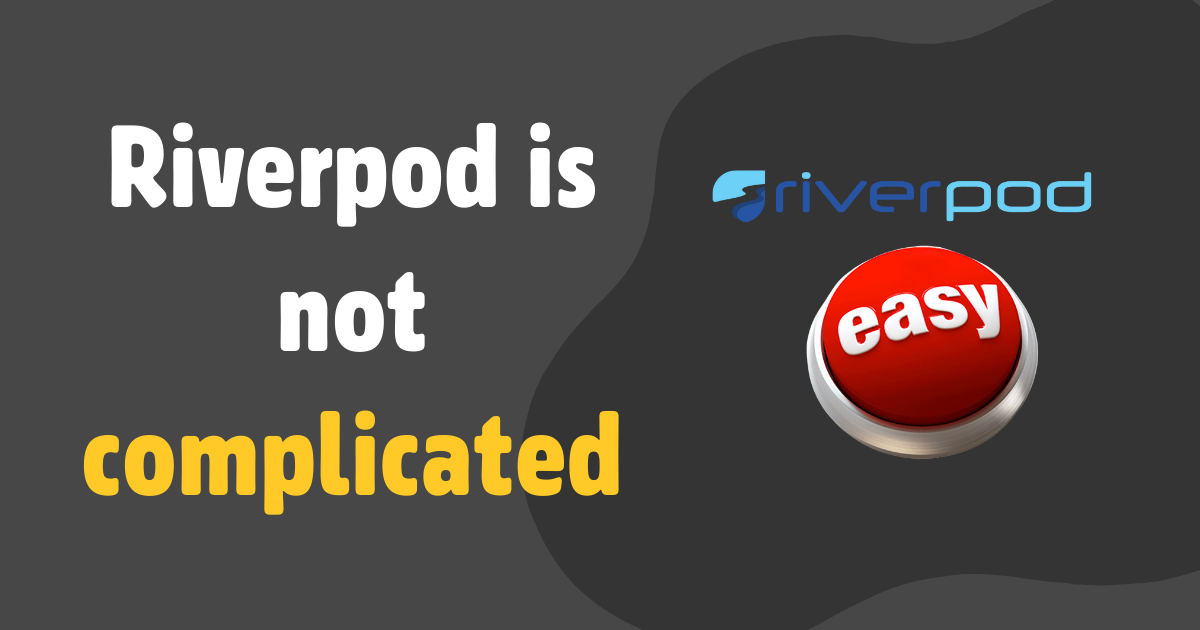Flutter Riverpod is Not Complicated - Getting Started with Riverpod

There seems to be a lot of confusion with Riverpod and the way it is used. Admittedly the documentation is lacking. And for someone getting started, there are many decisions to be made like:
- Should I use code-generation?
- How many providers should I create?
- What should be contained in each provider?
Because of this adaptability, it can become very confusing for someone just getting started. I'm creating this blog post to lay some ground rules that I set for myself when using riverpod. If you're getting started with riverpod, following these rules will be a good starting point.
But before reading on these rules, I highly recommend you checkout these guides in this order:
- Flutter Riverpod 2.0: The Ultimate Guide
- How to Auto-Generate your Providers with Flutter Riverpod Generator
- How to use Notifier and AsyncNotifier with the new Flutter Riverpod Generator
Basics
Because I know some of you are lazy as hell, I'll summarize what I think is important in the below bullet points:
- Riverpod is like a global variable storage and each provider is it's own global variable.
- Only special widgets
ConsumerWidgetandConsumerStatefulWidgethave access to these providers. - You can access the providers using
ref.readandref.watchref.watchis used in the Widget'sbuildmethod rebuilds the widget the state changesref.readis used outside of the Widget'sbuildmethod
- There are many different types of providers to choose from and the riverpod generator makes it so you don't need to choose which one to use.
- There are different modifiers you can apply to the provider when accessing it.
- By default you get the
AsyncValuewith no modifiers .notifiercan be used to access the functions within the provider.futurecan be used to get the latest value of the state asynchronously
- By default you get the
- An
AsyncValueis returned when accessing the provider with no modifiers.whenis typically used in the Widgetbuildmethod.valueis to get the current value
Common Pitfalls of Riverpod
Not Using Code Generation
I personally hate code generation. It adds an extra generated file and it abstracts logic that might be important to understand.
Because of reasons above, I decided to give riverpod a try without code generation. After a couple of times, of choosing the wrong provider, encountering bugs because of incorrect parameters, I decided that code generation was the way forward.
After I gave it a shot, everything became simple. It saved me hours of hair pulling trying to configure the correct parameters for each provider. Even the riverpod documentation highly recommends code generation.
Grouping Providers based on Technology
When first working with riverpod, I thought the best approach would be to group global variables by the technology. For example, I had a library for my database, I put all my database related functions in the single provider and called it a day. My thinking was that this was just a global variable storage
But by doing this, I lost a lot of the capabilities riverpod provided out of the box. I had to:
- Refresh the UI with
ref.watchbased on specific criteria - I had to manage the states myself which added unnecessary complexity
- Handle the initialization of states and loading states manually
If you want to see how NOT to use riverpod, I encourage you to checkout how I did it incorrectly with Fleeting Notes.
Not Using Streams
Streams are so so powerful. If you have a database that supports streaming I highly recommend you use streams to streamline your setup. There's no more need to handle updates, inserts, or deletes, they are automatically done so with your backend being the source of truth.
Examples
Below are two very common use cases for production applications. One is with authentication and the second is with routing.
Authentication
Below is a simplified version for learning purposes. Checkout the full code here.
@Riverpod(keepAlive: true)
class Auth extends _$Auth {
// We use a stream controller to control when the stream is updated and what object is in the stream.
final StreamController<AppUser?> authStateController =
StreamController.broadcast();
Auth();
@override
Stream<AppUser?> build() {
// listen to auth state change
final streamSub = client.auth.onAuthStateChange.listen((authState) async {
refreshUser(authState);
});
// dispose the listeners
ref.onDispose(() {
streamSub.cancel();
authStateController.close();
});
// return the stream
return authStateController.stream;
}
supa.SupabaseClient get client => supa.Supabase.instance.client;
Future<AppUser?> refreshUser(supa.AuthState state) async {
final session = state.session;
if (session == null) {
// set the auth state to null
authStateController.add(null);
return null;
}
// Make an additional query to get subscription data
final metadata = await client
.from("stripe")
.select()
.eq("user_id", session.user.id)
.maybeSingle();
// Put together custom user object
final user = AppUser(
session: session,
authEvent: state.event,
activeProducts: List<String>.from(metadata?["active_products"] ?? []),
stripeCustomerId: metadata?["stripe_customer_id"],
);
// update the stream
authStateController.add(user);
return user;
}
}
Routing
Below is a simplified version for learning purposes. Checkout the full code here.
// This is crucial for making sure that the same navigator is used
// when rebuilding the GoRouter and not throwing away the whole widget tree.
final navigatorKey = GlobalKey<NavigatorState>();
Uri? initUrl = Uri.base; // needed to set intiial url state
@riverpod
GoRouter router(RouterRef ref) {
// we watch the authState to update the route when auth changes
final authState = ref.watch(authProvider);
return GoRouter(
initialLocation: initUrl?.path, // DO NOT REMOVE
navigatorKey: navigatorKey,
redirect: (context, state) async {
// we redirect the user based on different criteria of auth
return authState.when(
data: (user) {
// build initial path
String? path = initUrl?.path;
final queryString = initUrl?.query.trim() ?? "";
if (queryString.isNotEmpty && path != null) {
path += "?$queryString";
}
// If user is not authenticated, direct to login screen
if (user == null && path != '/login') {
return '/login';
}
// If user is authenticated and trying to access login or loading, direct to home
if (user != null && (path == '/login' || path == '/loading')) {
return "/";
}
// After handling initial redirection, clear initUrl to prevent repeated redirections
initUrl = null;
return path;
},
error: (_, __) => "/loading",
loading: () => "/loading",
);
},
routes: <RouteBase>[
GoRoute(
name: 'loading',
path: '/loading',
builder: (context, state) {
return const Center(child: CircularProgressIndicator());
},
),
GoRoute(
name: 'login',
path: '/login',
builder: (context, state) {
return const AuthScreen();
},
),
GoRoute(
name: 'home',
path: '/',
builder: (context, state) {
return const HomeScreen(title: "DevToDollars");
},
),
],
);
}
What's Next?
If you liked what you saw, I encourage you to checkout my Flutter production boilerplate. This boilerplate doesn't only get you up and running in under 30 minutes, but also is a good resource if you're building your own app.
